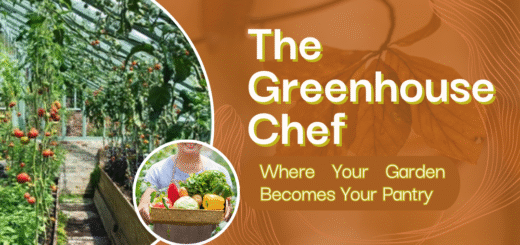Getting to Know Your Greenhouse’s Personality: A Guide to Your Plant Posse
Alright, let’s talk about the real joy of greenhouse life. It’s not just about the shiny glass and the warm, earthy smell—it’s about the characters that move in. Think of your greenhouse not as a sterile lab, but as a bustling backstage green room. You’ve got your headliners, your reliable stage crew, and a few high-maintenance stars who demand a specific kind of spotlight.
Getting to know their individual quirks is the secret. Some are tough as nails, others will wilt if you look at them wrong. But once you learn their language—a mix of sunlight, water, and warmth—you’ll be well on your way to a standing ovation at harvest time.
The Quick-Bite Crew: Herbs & Leafy Greens
These are your fast-growing, “snip-and-eat” plants, perfect for impatient gardeners.
- The Herbal Entourage: This group is all about flavor.
- Basil is the sun-worshipping socialite. It craves heat (think 70-85°F), basks in full sun, and likes its soil consistently moist but never waterlogged. Give it a chill and it’ll sulk dramatically.
- Rosemary & Thyme are the rugged individualists. They’re drought-tolerant, love a full sunbath, and prefer to be left alone. Overwater them and you’ll kill them with kindness.
- Cilantro is the fleeting artist. It grows quickly but bolts (goes to seed) the moment it gets too hot. Keep it in partial sun and plant new seeds every few weeks for a continuous supply.
- The Salad Bar Stars: These are the cool-weather lovers.
- Lettuce (all types) is the easy-going friend. It’s not fussy, grows quickly, and prefers the shoulder seasons (45-70°F). Give it partial sun and consistent water to avoid bitter leaves.
- Kale is the unshakeable tough guy. It can handle a light frost and actually tastes sweeter for it. Full sun to partial shade and regular water keep it producing for months.
- Arugula is the peppery overachiever. It germinates in days and you’ll be harvesting in weeks. It loves cool temps and will bolt if the greenhouse becomes a sauna.
The Main Event: Fruiting Vegetables & Underground Treasures
These plants ask for a bit more patience but pay you back in dividends.
- The Greenhouse Divas (Tomatoes & Peppers):
- Tomatoes are the ultimate prima donnas. They demand heat (70-85°F), tons of direct sun, and deep, regular watering aimed at their roots (wet leaves invite disease). They’ll reward you with unparalleled flavor.
- Peppers share the diva tendencies but are slightly more forgiving. They love similar heat, need less water, and will produce a ridiculous number of fruits from a single plant if happy.
- The Underground Alliance (Root Veggies):
- Carrots are the quiet, patient type. They need deep, loose, stone-free soil to form their perfect roots. They’re not fans of intense heat, preferring the 50-75°F range.
- Radishes are the class clowns—they grow so fast it’s hilarious. You can have a crop in under a month. They’re cool-weather champions.
- Potatoes are the treasure hunters. The fun is digging through the soil to find your buried gold. They like cool roots but sunny days, and need “hilling” (mounding soil around the stems) for a better yield.
The Long-Term Investments: Perennials & Small Fruits
These are the plants that move in and never leave, becoming the backbone of your greenhouse.
- Asparagus is the ultimate test of patience. You’ll nurse it for two or three years before getting a true harvest, but then it will feed you for two decades. It’s a loyal, long-term roommate that needs its own space.
- Strawberries are the cheerful spreaders. They’ll send out runners and fill a basket or a hanging pot, returning year after year with sweet, juicy gifts. They love well-drained soil and plenty of sun.
- Blueberries are the connoisseurs. They demand acidic soil, which often means growing them in large pots inside the greenhouse to control the pH. Get it right, and they’re worth the extra effort.
Conclusion: Cultivating a Community
In the end, managing a greenhouse is less about strict botany and more about community building. You’re the mayor of a tiny, leafy town. Your job is to listen—to notice when the tomatoes are thirsty, when the lettuce is getting too much sun, or when the basil is just a bit too cold.
There will be triumphs and failures. A plant might inexplicably thrive while another, despite your best efforts, gives up. That’s not a failure; it’s a lesson in what that particular resident needs.
The magic happens when you lean into these relationships. When you learn the rhythms of your space—how the light moves in winter, where the cool spots are in summer—you stop just growing plants and start cultivating a world. And the reward is a harvest that’s more than just food; it’s the delicious, tangible result of your care and attention. Now get out there and get to know your plants. They’re waiting for you.


